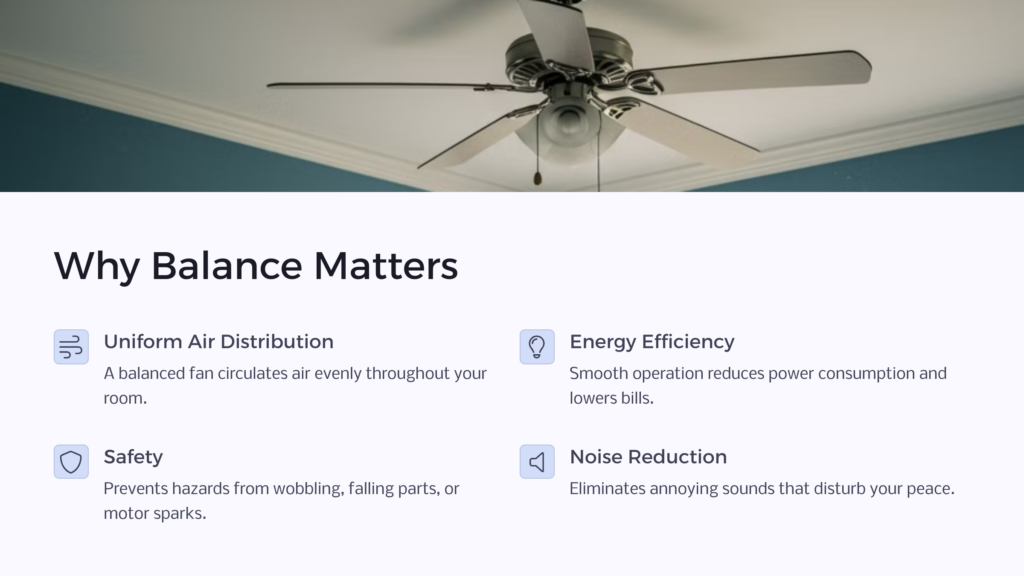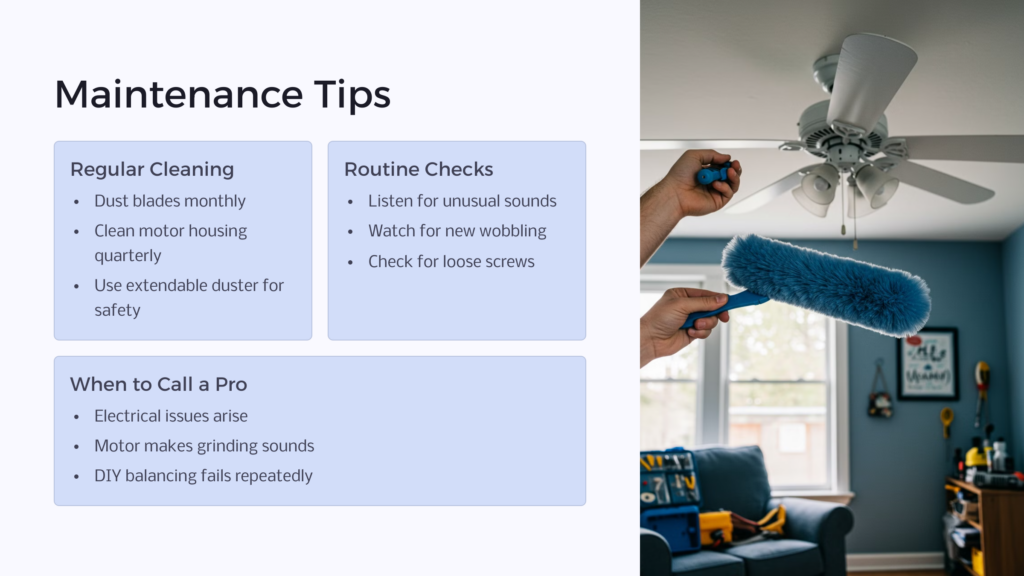T

The ceiling fan, a seemingly mundane object, significantly impacts everyday well-being, energy efficiency, and comfort in our homes. Often overlooked, the importance of a well-balanced ceiling fan cannot be stressed enough when looking at home improvement and maintenance. A smoothly operating fan distributes air uniformly, ensuring homely comfort while maximizing energy utilization. On the contrary, a wobbly ceiling fan not only disturbs peace with its incessant wobbling and noise, but it also compromises energy efficiency and might even pose a safety threat.
Identifying an Unbalanced Ceiling Fan

Recognizing a wobbly fan is the first crucial step towards resolving the problem. The most apparent symptoms include abnormal shaking, excessive noise, diminished air circulation, and premature motor failure. Ignoring such signs exacerbates the problem over time, potentially leading to exorbitant energy bills, compromised comfort, and even hazards from a falling fan or sparks from the overworked motor. Hence, prompt identification and rectification are key to avoiding these potential risks.
Tools Required to Balance a Ceiling Fan
To balance a ceiling fan yourself, you will need a ceiling fan balancing kit, a ladder, a screwdriver, and a light cloth. The fan balancing kit usually includes a weighted plastic clip and some adhesive-backed weights. Ensure the tools are sturdy and reliable for maximum safety and effectiveness. For instance, a non-slip ladder and insulated screwdrivers are recommended. A light cloth aids in cleaning the fan parts as dust accumulation is very common on fan blades.
Preliminary Steps Before Balancing
Before you start the balancing process, safety steps like turning off the power to the fan are paramount to prevent any electrical accidents. Cleaning each fan blade eradicates any dust that might falsely indicate an imbalance. Additionally, checking the ceiling fan mount and junction box is advisable, as a loose mount often mimics symptoms of an unbalanced fan. Simply tightening any loose screws could solve the problem without the need for a balancing process.
Steps to Balance a Ceiling Fan
Step 1: Checking the Blades Alignment
The process begins with visually inspecting the fan blades for any misalignment, anomalies, or damages. Each blade should be equidistant from the ceiling to ensure proper balance.
Step 2: Identifying the Unbalanced Blade
Next, rotate each blade gently to identify the one causing the imbalance. Attach the plastic clip from the balancing kit to the center of the leading edge of one blade and turn on the fan. Repeat for each blade until the wobble diminishes.
Step 3: Adding a Weight to the Unbalanced Blade
Once the wobbly blade is identified, stick an adhesive-backed weight on the top center of that blade’s surface, exactly opposite the clip. The exact position could vary depending on the fan model and manufacturer’s instructions.
Step 4: Testing and Adjusting
Finally, remove the clip, turn on the fan, and observe. If there is residual wobble, repeat Steps 2 and 3, adjusting weight placement as necessary.
Tips for Maintaining a Balanced Ceiling Fan

Even after the fan is balanced, routine checks and maintenance are vital. Regular dusting, screws tightening, and listening for unusual sounds can help keep your ceiling fan in tip-top shape. In cases where self-repairs are ineffective, engaging professional help may be necessary.
Possible Problems that Might Arise
Balancing a ceiling fan isn’t always straightforward. Sometimes, issues like warped blades, loose parts, electrical malfunctions, or even a faulty motor could arise. In such instances, you might need to replace the blades, tighten the screws, and, in extreme cases, consult a professional or buy a new fan.
Conclusion
Maintaining a well-balanced ceiling fan is instrumental in promoting a serene, comfortable, and energy-efficient living environment. Committing to regular checks and maintenance can avert complications and guarantee your fan serves you effectively. So, never underestimate the impact that this humble appliance has on your home and well-being.



